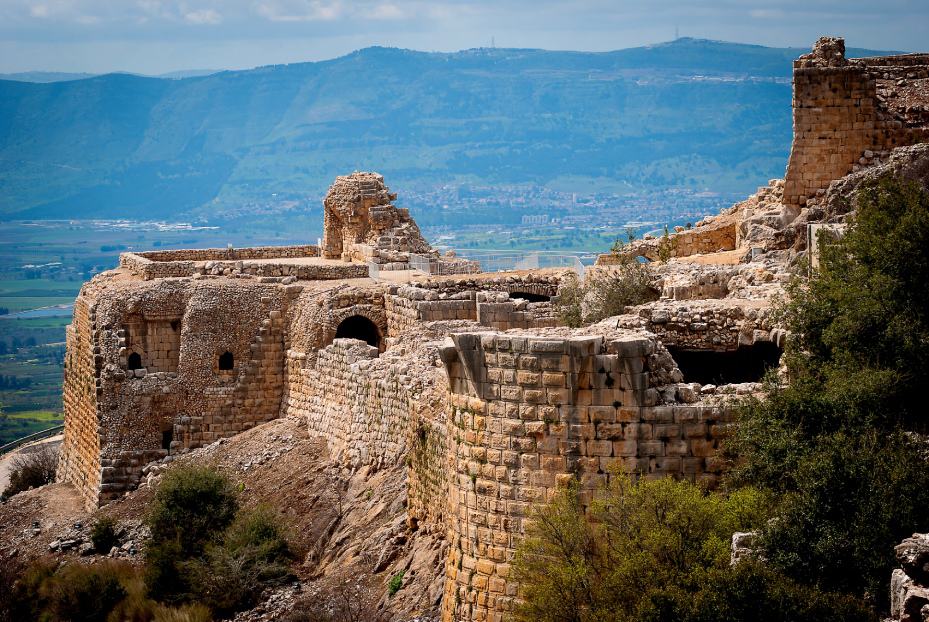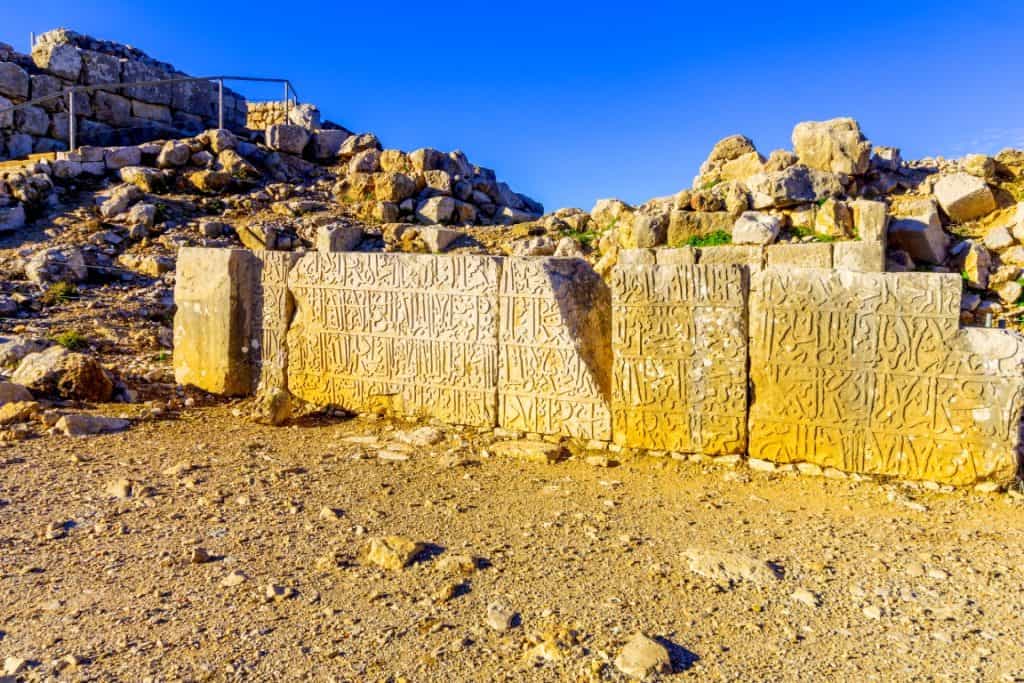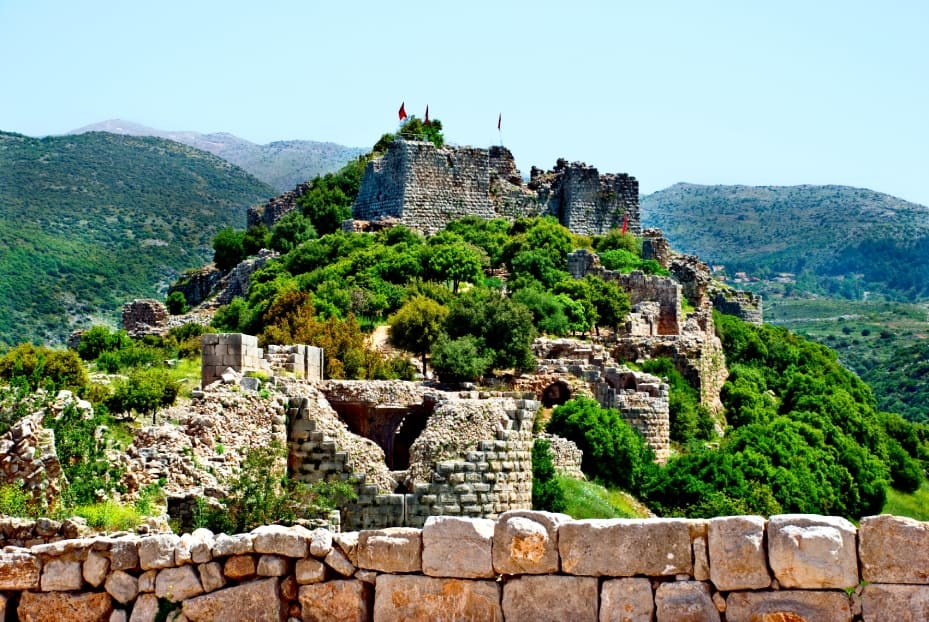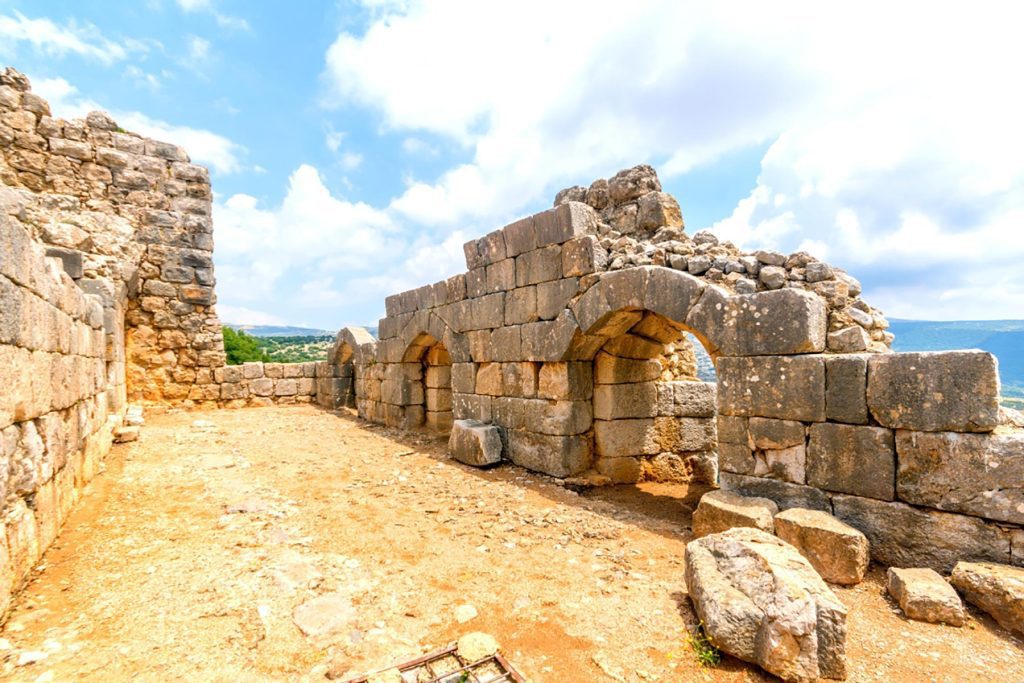The Nimrod Fortress National Park protects the Nimrod Fortress, a medieval Ayyubid castle set on the southern slopes of Mount Hermon. Also known as Nimrod Castle, the fortress is the largest castle from the Middle Ages remaining in the region. It is named after the biblical hunter and warrior, Nimrod.

Furthermore, the fortress is set on a ridge rising about 800 m above sea level and overlooks the Golan Heights. It was built to guard the major access route to Damascus against armies coming from the west. The fortified structure is a physical reminder of the Crusades.
The History History of Nimrod Fortress
For many years scholars believed that the Nimrod Fortress was a Crusader fortress built as early as the end of the twelfth century when the Crusaders ruled the nearby city of Banias. But other studies claim that the fortress was first built by the Ayyubids; about a hundred years later, around 1227; as part of the Ayyubid rulers’ attempts to defend themselves against an attack by the German emperor and Holy Rome, Frederick II von Hohenstaufen. Finally, in 2018 a new study found evidence that the fortress was built as early as the Hellenistic period.

So now we know that Nimrod Fortress was built by Saladin’s nephew Al-Aziz Othman between 1227 and 1230. It was constructed to protect the Holy Land from attacks by the armies of the Sixth Crusade. The fortress was named Qal’ at al-Subeiba, meaning “Castle of the Large Cliff” in Arabic.
The fortress’s strategic value was highly coveted and the structure was continually attacked by various forces. It was attacked by Christian forces under Frederick II, the Holy Roman Emperor, but stood its ground. It also withstood attacks under King Louis IX of France in later years.
The Mamluks Win Over Nimrod Fortress
The fortress eventually fell to the Mamluks after the Battle of Ain Jalut in 1260 and was expanded by the Mamluk Sultan Baibars. The construction work was memorialized with inscriptions on the fortress, and a large stone with the Sultan’s sigil; the Lion of Baibars; can be seen on the remains today. The Siege of Acre in 1291 ended Crusader rule in the Holy Land and pushed out the last of the Crusaders. Nimrod Fortress fell into disrepair and remained derelict for several centuries.
The Ottoman Turks conquered the land in 1517 and the fortress was used as a luxury prison for Ottoman nobles. It was later abandoned and ruined by an earthquake in the 18th century.
Visiting the Nimrod Fortress National Park
Today, the castle is protected by the Nimrod Fortress National Park. There are several Druze villages around the fortress and a few miles west there are remarkable ruins of a Greek temple at Hermon Spring. Furthermore, the castle grounds stretch along the crest of one of Hermon’s foothills and it takes about an hour and a half to explore the grounds fully. On my guided tours of the Golan, I like to include a stop at the fortress. It shows you the entire area and gives you a great panoramic view of the area! In the area, you can also tour sites like Hermon Stream Nature Reserve. It could be a great ending for a great tour of the Golan.

Nimrod Fortress National Park Opening Hours
Entrance to the park closes one hour before cited closing time
Summer hours:
Sunday–Thursday and Saturday: 8 am – 5pam
Friday and holiday eves: 8 am – 4 pm
Winter hours:
Sunday–Thursday and Saturday: 8 am – 4 pm
Friday and holiday eves: 8 am – 3 pm
Holiday eves: 8 am – 1 pm
Yom Kippur eve: 8 am – 1 pm
Phone: 04-6949277 Fax: 04- 6950877








